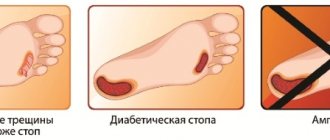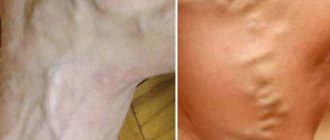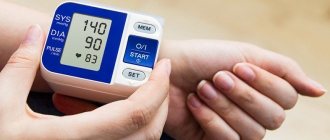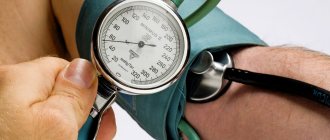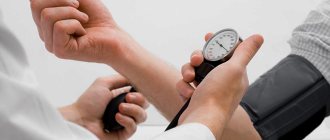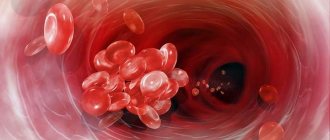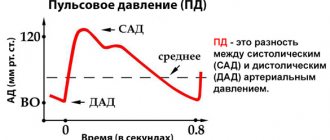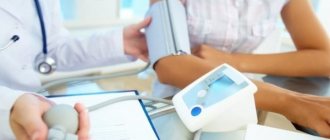Spider veins on the legs are the result of an expansion of small structures: venules, capillaries and arterioles. It is extremely rare for changes in all three types to occur. Another name is thaleangiectasia.
The disorder is not considered an independent disease. This is a symptom or consequence of a particular pathological process.
For the most part, it occurs without clinical signs; apart from a cosmetic defect and a visual disturbance, nothing can be detected. Treatment, accordingly, is not required in all cases. However, this is where the difficulties begin.
Spider veins may well be an early stage of varicose veins, but symptoms are not present in all cases. Therefore, it is recommended to undergo a thorough diagnosis in any situation and only then draw conclusions.
Therapy is indicated as needed. It consists of surgical minimally invasive removal of vascular structures.
Education mechanism
The formation of telangiectasia is based on a group of pathogenetic factors.
In more detail, there are only three of them:
Changes in vascular elasticity
In most cases, this is the result of a third-party pathological process or an incorrect lifestyle. Including diet, bad habits, insufficient rest or physical overload.
Tissue dystrophy occurs, the vascular wall becomes weak, and reacts sluggishly to changes in blood flow and the volume of liquid connective tissue.
The pressure in the arterioles, venules or capillaries increases. Which leads to the destruction of the internal lining, and then the muscle layer of the structure.
At a certain point the process reaches a critical point. The vessels are no longer able to contract spontaneously or change tone; they are in a constantly dilated position and filled with stagnant blood.
This leads to the formation of spider veins, which exactly follow the contours of the altered venous/capillary network.
Changes in the rheological properties of blood themselves
Increased viscosity, insufficient movement speed, low fluidity. All this leads to inadequate load on the vascular structures.
If there is a history of such a factor, changes in venules, arterioles or capillaries occur more quickly. Depending on the nature of hemodynamic deviations, certain vessels are involved.
This in turn determines a specific diagnosis and pathological process. Most often it is the venules that are affected. The result is already clear - the initial symptoms of varicose veins.
Burdened heredity
Finally, the third factor is rather hereditary in nature. Changes in blood vessels can be obtained from parents or ancestors of distant generations.
However, this is not a sentence or an axiom. Only a predisposition to certain problems is transmitted. Whether a potential violation turns into a real one depends on a variety of circumstances.
All three factors influence the condition of blood vessels, which are often encountered in the system. Then several types of stars are formed.
The contours of these formations repeat the structure of the blood supply bundles. As a rule, telangiectasia spreads in patches, although with large volumes the lesion appears to be a continuous area.
In most cases, spider veins do not pose a threat to health and life, are not considered a disease and are not the result of a particular pathological process. In approximately 40% of cases there is an exception to this “rule”.
How to prevent the appearance of spider veins?
To prevent the appearance of telangiectasias on the legs, do not wear high-heeled shoes or tight, tight pants. Try not to overuse sunbathing and going to solariums, saunas and steam baths. Instead of hot baths, it is better to take a shower.
Watch your weight and avoid fatty, fried, pickled and too salty foods. Try to avoid excessive physical activity.
If you are constantly forced to sit at work, take breaks several times a day and do leg exercises. Try to find time for walking every day.
It is recommended to take a position with your legs elevated above your head every day to drain the blood (at least for 30 minutes).
If you suffer from nicotine addiction, make every effort to at least limit the number of cigarettes you smoke, as nicotine causes vasospasm.
Plisov Vladimir, medical observer
14, total, today
( 41 votes, average: 4.93 out of 5)
Diet for atherosclerosis: nutritional recommendations, sample menu
Purulent thrombophlebitis: causes, symptoms, treatment
Related Posts
Classification
In medical practice, in order to clarify the nature of the process and determine its origin, asterisks are usually classified on several grounds.
First of all, the form is taken into account:
- Linear. They look like rays emanating from one center. Single thin stripes of scarlet or bright red, rich shade are possible. As a rule, they are dilated capillaries. They are never dangerous. May result from the use of certain medications. Occurs after medical interventions with prolonged application of a tourniquet.
- Spot. Found relatively often. They are clearly visible small spots, a millimeter in diameter, give or take. There are even fewer. It is necessary to distinguish from these hemorrhages that occur, for example, with thrombocytopathy. Differential diagnosis is the task of a hematologist. It is possible to involve related specialists.
- Tree-like. They differ from linear ones by several lines extending from the center. In many cases it is difficult to distinguish between them. They develop most often against the background of damage to arterioles.
- Star-shaped. A classic type of drawing. There is a single point from where the rays diverge to the sides. As a rule, this type occurs when venules are affected, including as the first manifestation of incipient varicose veins.
Another classification method is more informative and is based on a comprehensive visual assessment of the parameters of the stars.
There are three types:
- Thin red lines. The capillaries are most likely affected. Couperosis occurs - a violation of blood microcirculation in small vessels.
- Medium size, bright scarlet. Arterioles are involved. You can talk about a pathological or normal phenomenon only after diagnosis.
- Large, bluish or purple veins. This is a lesion of the venules. Varicose veins are probably starting to develop. An examination needs to be carried out.
Both classification methods are used equally often to accurately describe the condition.
There is no staging of the disorder as such. As has been said, spider veins are not a disease or a diagnosis, but a symptom.
The nature of the disorder can be judged by the accompanying clinic. Its presence or absence.
Vessels are visible on the legs: treatment with folk remedies
In complex therapy of leg veins, the use of alternative medicine recipes can also be effective. When the vessels of the lower extremities are visible, they can reduce the severity of this manifestation and even alleviate the accompanying symptoms.
To ensure that the vessels on the legs are no longer visible, you can use tinctures and decoctions to prepare food additives, rubs, compresses and homemade ointments. The ingredients are various plants, fruits, vegetables and other natural products that have healing properties. But it is better not to experiment or self-medicate, and be sure to discuss the possibility of using any folk recipe with your doctor.
Additional symptoms
If there are vascular diseases, at least several negative manifestations are observed:
- Local itching sensation. In the area of localization of spider veins. Desire to comb the area. It is possible that altered capillaries, venules or arterioles are the result of atherosclerotic changes. A trophic ulcer begins to form. Although exactly the same symptom is observed with varicose veins.
- Heaviness in the lower extremities. Especially after a night's rest or a long stay in the same static position. It accompanies a lot of problems and indicates the pathological nature of the cosmetic phenomenon.
- Swelling. Increase in soft tissue volume due to fluid accumulation. As the underlying disorder progresses, it becomes more pronounced. Corrected by physical activity (as far as possible) and diuretics.
- Burning. Feeling of goosebumps and movement under the skin. Extremely uncomfortable condition.
- Cramps, pain. The result of insufficient blood flow in the lower extremities. Painful muscle spasms occur mainly at night. At night. Or after a busy day, if you had to move a lot or stand in one place.
The clinic is evaluated as part of the diagnosis, along with objective signs that can be seen with one’s own eyes.
Home Remedies
Traditional medicine will help you get rid of spider veins at home. You can use one of the following recipes:
- Aloe juice. Treat the affected areas only with fresh juice. You can squeeze it out or cut the leaf in half and wipe the cut on your skin. This remedy is best used for spider veins on the face.
- Instead of aloe, you can use Kalanchoe - the principle of use is exactly the same.
- A sea buckthorn mask will help against vascular network on the face. You need to squeeze the juice out of the berries and add three times less starch to it. Apply the product to the problem area, remove after 15 minutes with warm water and use a moisturizer.
- Similar to the previous recipe, other berries are used: strawberries, currants, lingonberries, cranberries, raspberries. The algorithm of actions is the same.
- If the skin of the legs suffers from telangiectasia, then using apple cider vinegar is effective - the concentration should be no more than 5%. Treatment of the affected areas should be carried out three times a day. Continue this therapy for at least a month.
- A simple way to get rid of spider veins on the skin is parsley. You need to chop a bunch of greens with roots, pour half a glass of boiling water, strain after 20 minutes and add the same amount of cooled boiled milk. The composition is used for compresses - they should be kept on the affected areas for half an hour.
- An infusion of chamomile and calendula flowers gives a good effect. You need to steam a glass of raw materials in a liter of boiling water. When the composition has cooled to an acceptable temperature, you need to lower your feet into it. A similar product can be used as compresses - it is suitable not only for the legs, but also for the face. It is enough to soak a gauze napkin in the composition and apply it to the affected area.
- Similar to the previous infusion recipe for foot baths, you can use a mixture of chamomile and oak bark. Feet should be kept in such a bath every day for half an hour for a week.
- To eliminate spider veins on any parts of the face and body, it is effective to use pine infusion. To prepare it, you need to take a half-liter jar of fresh raw materials, fill it with a liter of water and boil it. Leave for 10 minutes and strain. Use the infusion warm. For spider veins on the face, you can make lotions, and if the lower extremities are affected, you can use foot baths. The duration of the procedure is 30 minutes. This therapy should be carried out daily. To give the infusion softening properties, you can add chamomile color to it before boiling. If you use the product in filter bags, then add it after boiling during infusion. You can add a few drops of essential chamomile oil to the bath.
- Tomato juice. To obtain it you need green tomatoes. The juice is used as a lotion. They need to wipe the affected areas of the skin for a month.
- Cabbage leaves help with spider veins on the legs. You need to pour boiling water over several sheets, wrap them in plastic and place them in the refrigerator for a day. Wipe the affected areas with apple cider vinegar, after the skin has dried, apply prepared cabbage leaves and secure with a bandage. Do the procedure at night. Continue treatment until recovery.
- Essential oils have a good effect on spider veins. You need to mix equal parts lemon oil, avocado product and almond seeds. The affected areas should be treated four times a day. Carry out the treatment for 1-2 months, then take a break for a month and repeat the therapy.
- Tomatoes can also be used to eliminate large spider veins. The tomato needs to be cut and the cut side applied to the affected area. You can use cucumber peel in the same way.
- To eliminate spider veins on the face, it is recommended to wash with ice cubes. You should freeze not ordinary water, but infusions or decoctions of medicinal herbs. Linden blossom, sage, chamomile, calendula, green tea (not bagged) are effective.
- If the vascular network on the legs causes itching and burning, then you should use lemon balm, linden blossom and valerian root for foot baths. An infusion of linden blossom with lemon balm is prepared separately - pour half a glass of herbs into 1.5 boiling water. Separately, brew 1 tbsp in a glass of boiling water. l. valerian roots. After 15 minutes, strain and combine both compositions. Add warm water if necessary. Keep your feet in this bath for half an hour.
- If you have spider veins, you need to treat the problem from the inside. To do this, you need to prepare an infusion of hazel bark - brew a tablespoon of the raw material in a glass of boiling water, after an hour, boil for 10 minutes. Strain the cooled infusion and drink in small portions throughout the day. Continue treatment for a month.
Any components, even of plant origin and when used externally, can cause allergic reactions and other side effects. Use various means carefully. Before first use, it is recommended to apply the composition only to a small area of skin to monitor its reaction.
Reasons for violation
There are a huge number of factors for the development of spider veins. Speaking about specific points:
- Skin diseases. Rosacea, dermatoses. Accompanied by massive changes in small-caliber vascular structures. It is not difficult to detect the problem, because there are many accompanying symptoms.
- Burdened heredity. The tendency to such a cosmetic defect may be the result of transmission from past generations. However, the problem becomes more acute due to an unhealthy lifestyle and the influence of environmental factors: physical activity, smoking, past illnesses and other factors play a role.
- Autoimmune pathologies, vasculitis. Inflammatory processes in capillaries, venules, arterioles.
- Initial inferiority of the structure of blood vessels. Congenital, less commonly acquired.
- Liver pathologies causing metabolic problems. Thus, with cirrhosis, spider veins often form. This is the result of a drop in blood fluidity and a violation of its rheological properties. In addition, there are a lot of other signs, which allows you to make a diagnosis relatively quickly.
- Hormonal changes. From pregnancy to menopause. Endocrine disorders can result in varicose veins, so it is worth getting diagnosed.
- Arterial hypertension. Small vessels also suffer. Especially if the pathology, high blood pressure, has existed for a long time. Treatment of the underlying process does not produce a clear result. Defects must be eliminated separately.
- Venous insufficiency and varicose veins are the most common causes of spider veins on the legs. Occurs in approximately 40% of described cases. The remaining 60% are due to natural, non-pathogenic causes and a small portion to other diagnoses.
- The disorder also occurs in heart failure (its symptoms are described in detail in this article).
Why is it dangerous?
If the venous network in the legs is not noticed and treated in time, it leads to the progression of varicose veins. In this case, the violation is a serious disease, and not a cosmetic defect. Complicated varicose veins are fraught with the following consequences:
If the disease is neglected, ulcers may appear on the extremities.
- formation of trophic ulcers on the legs;
- the development of thrombophlebitis, in which a blood clot forms in a subcutaneous vessel;
- choroid plexus rupture;
- venous insufficiency.
At-risk groups
People from them are still healthy, but at any time they can become carriers of spider veins.
These, for example, include people over 60 years of age, workers in hazardous chemical industries, and hot shops.
Representatives of professions that are constantly in a static standing position (cooks, teachers, lecturers).
Those who like to smoke, drink alcohol, take steam baths and others.
It is interesting that women make up almost 80% of the number of patients of a vascular surgeon or hematologist with a complaint of asterisks.
It is quite possible that such a statistical imbalance is associated with greater attention to one’s own appearance and health.
Lack of physical activity also has a negative impact.
What is telangiectasia
The appearance of spider veins on various parts of the body is called telangiectasia. From a physical point of view, this is an expansion of blood vessels that is not associated with inflammatory processes. This pathology can occur on the face - cheeks, wings of the nose; on the legs - legs and thighs; in rare cases - before our eyes.
Stars on the skin are not an independent disease, but a symptom of such changes and pathologies as:
connective tissue diseases;- rosacea;
- chronic venous insufficiency;
- damage to the skin under the influence of too high and too low temperatures (burns and frostbite);
- age-related changes in the epidermis;
- liver pathology;
- endocrine diseases;
- vein pathologies;
- diseases of the cardiovascular and digestive systems;
- high degree of obesity.
There are also known cases of congenital telangiectasia in Rendu-Osler disease and Louis-Bar syndrome.
Types of vascular dilations
There are four types of spider vein shapes:
- linear - single red lines on the skin;
- tree-like - several capillaries forming a pattern in the form of a tree branch;
- dotted - bright red single dots without a linear pattern;
- star-shaped - a radial pattern in the form of rays emerging from a central point.
The color of the pattern indicates which vessels are damaged. Thin lines up to 0.2 mm red indicate damage to the capillaries. Red lines of greater thickness appear when small arterial vessels dilate, and the purple color of the pattern indicates damage to the venous vessels.
Manifestation of symptoms of pathology
Red and purple patterns of various shapes are practically the only symptom of vascular damage. Women during menstruation and hormonal changes may feel discomfort and mild nagging pain in the area of the vascular network on the legs.
If the cause of vasodilation is the beginning of varicose veins, the list of unpleasant sensations increases. Itching, burning, and a feeling of heaviness appear in the legs. By the end of the day, the legs swell, and cramps appear at night. The number of vascular lesions on the legs increases, and small hematomas—areas of bleeding under the skin—appear without physical impact, that is, not as a result of injury.
Who is at risk
Spider veins can appear not only due to disease, but also due to lifestyle and even gender. At risk are:
- women (men are 75% less likely to have external manifestations of changes in blood vessels);
- elderly people (after 65 years, the likelihood of stars appearing on the skin increases by 80%);
- lovers of natural tanning and solarium;
- victims of radiation exposure;
- those whose lifestyle is associated with borderline temperatures (frequent visits to the bathhouse, work in conditions of high or very low temperatures);
- patients taking medications and contraceptives containing hormones;
- women during pregnancy and breastfeeding;
- smokers;
- people who, due to the nature of their duties, spend a lot of time in one position (sitting) or are forced to walk long distances (drivers, IT employees, office workers, foot couriers and postmen).
Frequent wearing of high-heeled shoes and unsuccessful peelings can also lead to the appearance of vascular networks on the legs.
Treatment methods
Therapy is aimed at combating the cause of the appearance of stars on the lower extremities, and then at eliminating the cosmetic defect itself. These two problems are solved by different methods.
The first involves the use of medications from several pharmaceutical groups:
- Venotonicov. Restores normal flow of blood and lymph. The work of the walls of blood vessels and their valves. Detralex, Phlebodia, Venarus, Troxerutin are used especially actively.
- Vitamins. Including B, C, rutin, flavonoids. Helps strengthen the walls of venules, arterioles and capillaries. Prevents further destruction of structures and a decrease in their tone.
- As an auxiliary measure, it is possible to use products for external use. Ointments, gels. Like Trokesevazin and others. They provide an anti-inflammatory effect, restore the speed and quality of blood flow.
Tablets and medications for external use are far from a panacea. Although they are able to cope with the underlying disease that caused the defect, the stars themselves are already formed and will not go away. You will have to eliminate them separately.
The second problem is solved through surgery. But these are not classic traumatic operations, but minimally invasive techniques.
Each is practically safe, does not cause pain, discomfort and does not require hospital stay or long-term rehabilitation. There are also no complications.
Among the possible methods:
- Laser coagulation. Cauterization of arterioles, capillary networks, and venules using a beam allows you to quickly remove spider veins. Due to the high temperature, the destruction of altered structures occurs in a matter of seconds. The patient does not experience discomfort or pain. The procedure is completed within 5-15 minutes.
- Electrocoagulation. The principle is approximately the same. But it is used on a laser emitter, and an electrode. Otherwise the essence is identical. The procedure allows you to get rid of stars in the form of altered blood vessels in 5-10 minutes.
- Radio wave removal. In this case, high-frequency radiation is used. Allows you to achieve high-quality results without blood and pain in the future. Treatment of spider veins using radio wave removal lasts 10-20 minutes, which is slightly longer compared to other methods.
- It is possible to remove it by injection of ozone mixed with oxygen, but this is rather overkill. The question is controversial as to how appropriate it is to prescribe such a procedure.
- Sclerotherapy is also performed. It involves an injection, the introduction of a special drug into the problem area, which causes adhesion (collapse) of arterioles, venules or capillaries and their death. Despite the threatening description at first glance, it is completely safe and does not cause pain.
Removing spider veins does not present much technical difficulty.
The cost of such procedures is relatively low, and the effectiveness is also approximately identical. What exactly to prescribe is decided by the specialist doctor, taking into account the patient’s opinion.
First signs and main symptoms
Most women pay enough attention to their legs; it is difficult to miss the first signs of spider veins.
Perhaps not everyone knows that long before the appearance of dilated capillaries and deterioration in the appearance of the epidermis, the body is already signaling about impending trouble.
First signs:
- swelling, pain in the legs, burning, itching;
- There is no red-violet mesh yet, but by the end of the day muscle weakness and nervous tension from pain inside the legs appear.
Further, the disease develops in different ways. With constant exposure to negative factors, the disease progresses at a high rate. The higher the load on the legs, the more pronounced the vascular network appears.
Main symptoms:
- gradually dots appear on the skin, short winding stripes of a reddish-violet color;
- over time, there are more such dots and uneven stripes, a characteristic pattern appears on the body, reminiscent of a cobweb or mesh;
- by the end of the day, pain in the legs intensifies, the legs become full, swollen, and fatigue is felt;
- Gradually the “mesh” grows and appears in new areas. Varicose veins often develop;
- the severe stage of the disease is characterized by convulsions at night and deterioration in general condition;
- if blood circulation is impaired, headaches intensify, sometimes the temperature rises;
- in advanced cases, small vessels swell greatly, burst, and a mini-hemorrhage occurs under the skin.
Forecast
It is incorrect to talk about the prospects for recovery. Because spider veins are not a disease or a diagnosis.
To say something specific, you need to know what caused the cosmetic defect and abnormal expansion of the blood supply structures.
In the vast majority of cases, if there is a diagnosis, then we are talking about chronic disorders such as varicose veins and other abnormalities.
They proceed sluggishly, forming over the years without visible dynamics. There is plenty of time for diagnosis and treatment, so the prognosis is favorable.
As for more dangerous diagnoses, such as liver cirrhosis, autoimmune generalized vasculitis, obliterating atherosclerosis, it all depends on the moment of initiation of therapy.
The later recovery begins, the less chance of success. The prospects are different. Cirrhosis can be compensated only at the very beginning, then a transplant will be required, the same applies to vasculitis.
The prognosis is determined by the course of the pathological process and its aggressiveness.
You also need to take into account a lot of other factors: age, gender, bad habits, lifestyle in general, chronic and previous acute diseases, hereditary predisposition, the nature of the defect itself and its aggressiveness, the presence or absence of dynamics (the area increases, decreases or does not change at all and etc.).
It is better to address questions regarding prognosis to your attending hematologist or specialized surgeon.
